The Confession of Sweetwater: Who Painted Over Ed Ruscha’s Masterpiece?
by
Gordy Grundy
This is huge. I was grinding pencil lead and burning paper as I furiously wrote down her confession. “I painted over Ed Ruscha’s Sweetwater with thick blue enamel...” The perp was speaking softly, her voice dulled with regret. An art world mystery of half a century has been solved and I have the confession!
Walking the art beat, sensational stories do not avail themselves. You have to dig deep or get lucky. It’s hard to make a story out of the minimalist who gets decorative or a video artist who suddenly sculpts. Conversely, politics won’t let you write about the trustee’s wife who ran off with the street artist. This time I got lucky. I had a genuine, old-school scoop.
I wrote a piece for Artillery magazine about the impact of gallerist Irving Blum. In the interview, I asked, “What happened to Ed Ruscha’s seminal painting Sweetwater? Is it true that a UCLA art student painted over it?” Blum had no answer. And neither did the art world. The only reference to the incident is an oral history by academic Henry Hopkins. He identifies the event, but not the perpetrator, “a name I’ve fortunately forgotten.” Who destroyed the Ruscha? What twisted mind would eliminate such a very important, avant-garde work?
My article, “Ho Hum Blum,” received much attention and critical praise. Several weeks later, a letter, addressed to me, arrived at the Artillery headquarters. It was signed Olga Seem and she confessed to the crime. The true story, known only to a few, has come to the fore after 49 years. As a result, many books, essays and a catalogue raisonné will need to be corrected. The Ruscha history has been rewritten.

As the notion of American pop art was beginning to form in the minds of a small handful of artists, the Los Angeles painter began a series of text-based works, the likes of which had no precedent. These minimal abstract pieces had elements that were both loose and tight, messy and precise. Today, many write that the most influential and seminal of these works are SU (1958), Box Smashed Flat commonly known as “Vicksburg” (1961) and Sweetwater (1959). All feature ink and oil on canvas. Red and blue striped fabric was applied to SU.
Henry Hopkins (1928-1988) was a respected curator and educator. He describes Sweetwater in his oral history for the Archives of American Art at the Smithsonian:
“It was an interesting configuration because, again, it was essentially a white canvas of rather large scale. At the bottom the word “Sweetwater” was spelled across the base in typographical form with two very fine lines, one above the word and one below the word. Then, the full bottom half of the canvas, other than that, was completely blank. In the top section it had a series of splotches of color where he had obviously put a pile of paint on and dragged across the surface, maybe with a wooden stick or a piece of cardboard or who knows... It’s a very funny painting. The top is very rich in pigment, and like an Abstract Expressionist painting, the bottom half is pure and clean, with the one word, “Sweetwater.” (Ruscha and I) talked a little bit about that. I wanted to know what “Sweetwater” meant. Sweetwater is a town in Texas along Route 66.”
In 2009, Christopher Knight wrote an article in the Los Angeles Times on the unsolved Sweetwater mystery and wisely noted that there is a comma at the end of the “Sweetwater” text, a continuation with an eye on a future horizon, like a road.
Candy Coleman, a director of the Gagosian Gallery, corrected the history for me, “Sweetwater is a small Tennessee town that Ruscha hitchhiked through in 1954 when he was 17. His perception of the sprawling American landscape, viewed from the road, continues to surface in his artwork today.” She continues, “This work has special meaning for me since I grew up not far from Sweetwater, TN. When I first began working with Ed in 1996, I learned about this painting’s demise and was fascinated. The demise of this painting is one of the reasons I began the catalogue raisonne of Ed’s paintings, which I continue to manage today and we are about to publish volume five, which brings the series up to 1997.”
The only remaining evidence of Sweetwater are two black-and-white photographs of the colorful painting. Hopkins says, “The recollection clearly is that they were rather pastel-like shades. I vaguely remember cerulean blue, ochre and a green, just simply dragged across the canvas in a very thick, impasto way.”

How important is Sweetwater? Candy Coleman answers, “Sweetwater was one of Ruscha’s first paintings, incorporating text combined with strong imagery.” Most notably, it was one of Ruscha’s first large works. I asked Coleman what Sweetwater would bring on the open market today. She replied, “Since I worked at Sotheby’s for 10 years I am comfortable guessing that the auctions would estimate this work at $4 to 6 million, but it is very hard to predict what it would sell for, considering the interest in Ed’s early works.”
Hunter Drohojowska-Philp, the author of Rebels in Paradise: The Los Angeles Art Scene and the 1960s, states, “Since Sweetwater is considered “Ed’s first major painting,” in the words of its owner Henry Hopkins, its potential value is incalculable. However, Ruscha is a great artist so he simply went on to make a second major painting, and then a third and so on.”
Sweetwater was not destroyed by malice, envy or idealism. Sweetwater was destroyed with the same values with which the original artwork was created: an artist finding a new voice. This was not an art crime. This is a tragedy of opportunity and hope.
In the dawn of the 1960s, Henry T. Hopkins, in his early 30s, was leading a busy life in the arts. The painter and photographer had stopped making art and was teaching its history at UCLA. In tandem with Shirley and Walter Hopps of the Ferus Gallery, he was leading a series of slide-show salons in private homes that pioneered an interest in modern art. Hopkins was also serving as director of the Huysman Gallery on La Cienega, curating the groundbreaking and highly controversial War Babies exhibition. It was a crazy time for Hopkins, for he wore many hats to pay the bills. Buying art was not affordable to him, but lay-away made it so. Hopkins bought a curious painting from one of his Huysman artists, a young Ed Ruscha. According to artist and brother Paul Ruscha, the elder Ruscha gave Hopkins a photograph of Sweetwater and cut 20 receipt coupon tabs along the bottom. Hopkins paid $10 a month over 20 months.

Back then, Hopkins was moving fast and frequently. As he states in his Smithsonian oral history, “I carried [Sweetwater] around with me wherever I went for quite a period of time.” Finally, he stored the painting in his shared office at the University of California Los Angeles. He states, “I put it in my office... with the back side of the canvas out.” Sloppy Hopkins.
 Much has been said of the sexism in the art world at that time. Female artists were generally ignored. Unlike her classmate Judy Chicago, one of them had no time for feminism. She was too busy taking graduate school classes at UCLA during the day, raising her adolescent son in the evening and then working the nightshift in the reservation office of United Airlines. Olga Seem was 36 and she wanted to make art. Much has been said of the sexism in the art world at that time. Female artists were generally ignored. Unlike her classmate Judy Chicago, one of them had no time for feminism. She was too busy taking graduate school classes at UCLA during the day, raising her adolescent son in the evening and then working the nightshift in the reservation office of United Airlines. Olga Seem was 36 and she wanted to make art.

As a grad student seeking to teach, Olga was a teacher’s assistant and shared an office with four or five other TAs. Hopkins was not one of them. On her desk stood a very large painting, facing in, leaning against the wall. “It appeared unfinished,” she said. The painting, with much empty white space, featured text that read “Sweetwater.” There was no signature. “I knew who Ed Ruscha was at the time,” Seem said. The Los Angeles art world was small and familial. Ed Ruscha was known but his work was not yet recognizable. His signature style was just developing.
In 1963, Ruscha’s new work was bold and shouting loud. In that year, he produced Oof, Noise and the classic Standard Station, Amarillo, Texas. None of these have the grace and subtlety of Sweetwater that was created four long years earlier. Olga Seem looked at Sweetwater nearly every day for over a year. It towered over her. There was nothing about this painting to connect to Ed Ruscha.
Painters love bars. The wood frame that one stretches with canvas is a revered tool. Artists eye them in the same manner that a car lover gazes at a classic Corvette. A stretcher bar is an open road, a blank canvas on which an object of beauty may appear. Olga Seem looked at the painting on her desk and noted that the bars were solid and well made. She didn’t see someone else’s painting; she imagined her work and her hand on that expansive space.
Art schools are messy places. There is a sense of organized chaos to the vibe. Consider it a friendly fraternity with a common cause dedicated to beauty. Everyone’s business is your business. Ideas and ownership are very fluid in art school.
In 1963, the art department at UCLA had Vija Celmins, Tony Berlant and Judy Gerowitz also known as Judy Chicago, bumping into Max Hendler and Charles Garabedian in the hallway. Joan Maffei and Marvin Harden were making art alongside Van Slater and Don Lewellyn. At the time, crazy things were happening in the Los Angeles art world. Bold new works and fascinating artists were emerging. A small gallery scene was exciting and growing. A cadre of collectors began to study and buy. Everyone drank a little too much at Barney’s Beanery. Peyote was the drug of choice. Olga Seem remembers a class field trip to the home of art collector Edward G. Robinson. The tough guy actor had an amazing gallery in his house. The La Cienega Artwalk along “Gallery Row” brought tons of artists and art lovers together. Every Monday was a party. With all of the nearby restaurants, it was a bash.
Olga Seem was working hard and just getting by. There was not much money allocated to the luxury of making art. The expense of a good set of stretcher bars, especially a big canvas, was not always in the budget. Olga Seem asked her fellow teacher assistants, “Who does this Sweetwater painting belong to?” No one knew. Ben Sakoguchi shook his head. Dorothy Brown said, “No one knows.” Jan Stussy, her advisor, suggested, “Go ahead and take it.” Olga did. She was thrilled to have it.
Size matters. The Ruscha Catalogue Raisonne lists the dimensions of Sweetwater at 60 inches tall by 48 wide. Henry Hopkins struggled to remember, “I notice that it says here on the back (of a Sweetwater photograph), “About forty-six by sixty inches.” I think it was at least that scale, if not even bigger, which was the first big painting of Ed’s I had ever seen.” In truth and according to the documentation of Olga Seem and the extrapolative calculations of the author, Sweetwater, ink and oil on canvas, was a large painting at 60 inches wide and 70 tall. Let history conclusively make note.
Happy to have the canvas, Olga Seem roped and tied the painting to the roof of her bright red Chevy station wagon and drove home to Hollywood, near Gower on Willoughby, where she and her son were living with her parents. She used an empty room as a painting studio. There, Seem placed the vertical Sweetwater canvas horizontally on a makeshift easel. Almost immediately, Seem knew what she wanted to do with it. The possibilities were exciting and endless. In September of 1963, Seem dipped a large brush into a can of blue enamel paint. She laid down a thick ground cover. [See Slideshow below.]
A week later, Henry Hopkins was zipping through the UCLA art department. He stopped short. Where was his “Sweetwater”? Hopkins asked around. Where was his valuable $250 painting by Ed Ruscha the fast rising art star? None of his colleagues knew. In any art department, word circles fast and with exaggeration. The dollar value had increased by 50 bucks and the work was a sudden masterpiece. The theft was a scandal.
Jan Stussy, Seems teacher on her committee, was responsible for getting Seem into UCLA. Now he may have to be the one to kick her out. Stussy whispered into her ear, “Henry Hopkins is wondering what happened to his $250 painting.”
Olga Seem was mortified. In her bedroom studio, there stood her work in progress. The wax-heavy enamel was almost dry. To save money, Seem had stretched the paint, not with linseed oil from the art store, but with the affordable Dormers Wax from the supermarket.
Seem was traumatized. She had destroyed the earnest work of a fellow creative. She did not confess and remained silent. Only a small handful of people knew and they held their tongues. Grad students bond as loyally as an army unit. Seem was in agony. Two weeks later, she wrote a note to Henry Hopkins and left it on his desk.

In his oral history, Hopkins recalls, [(Sweetwater] was a painting I had become incredibly fond of because of the circumstances. Finally, nobody said anything. But I came back about a week later and in my office there was a little note on my desk from a young woman whose name I’ve fortunately forgotten, that indicated the fact that she wanted to talk to me. So I went to find her and she said that she was an art student at UCLA, a painter.”
Seem and Hopkins discussed the possibility of a restoration. Ruscha had used delicate ink and oil on Sweetwater. Hopkins recalls, “She was a person who was painting kind of like Joan Brown at that moment, with two-foot thick pigment and a few other things. So it was totally gone, and that was the end of Sweetwater.”
The crisis was over but the price was heavy. The canvas was huge and a challenge. Seem had great difficulty in the creation of her Still Life With a Bell Pepper. Every time she thought of Ruscha, she would have a panic attack. At this time, the Ruscha name crossed many lips. The canvas was cursed. After two months of struggle and agonizing decision-making, she finished her piece.
Seem was never quite pleased with the painting. She never presented the large work for a grad school evaluation. There was too much trauma associated with it. Seem felt that she had destroyed a living thing. She was as mournful as a mother at the death of a child.
In December of 1963, Seem ripped her Still Life With a Bell Pepper off the bars. She rolled up the Sweetwater canvas and threw it in the trash. She recalls, “Then, I carried the can to the curb.” And so went Ed Ruscha’s Sweetwater. Seem found a relief.
Seem gave the now empty stretcher bar to her classmate Ben Sakoguchi. The painter was broke and he desperately needed the large canvas for his politically charged work. The artwork of Ben Sakoguchi was honored in the Getty’s Pacific Standard Time.
Olga Seem has led a triumphant life in the arts. In 1964, she was accepted into the MFA program at UCLA, but the pursuit of the degree was waylaid by her first teaching job at Woodbury College. She began to paint in earnest, showing at the Ceejee Gallery. In the decades since, single Seem paid the rent and raised a son by teaching at several art colleges around Los Angeles. She has always devotedly made artwork and has evolved an organic and primitive style. She has been married to several galleries over her career. In April of 2013, she will show at the Couturier Gallery in Los Angeles. She has been the recipient of many awards and prestigious grants. Her work resides in the permanent collections of five museums. The spry 85-year-old lives and works at her art-filled Glendale home.
With her platinum hair cut like a pixie, the diminutive Olga Seem twinkles when she smiles. The busy artist can manage a wry chuckle when thinking about Sweetwater. Bygones can be bygones but regret always leaves a stain. Olga takes it harder than she should. Any artist would have done the same thing.
So, who’s gonna tell Ed? Henry Hopkins states in his oral history, “I think it took me something like fifteen years to tell Ed finally what had happened to [Sweetwater]. Now he knows, so my conscience is clear.”
Olga Seem sought absolution as well. In 1983, Seem attended the opening of “The Works of Ed Ruscha“ his retrospective at the Los Angeles County Museum of Art. At the gala, she reminded Henry Hopkins of her culpability and received a friendly embrace. Her old UCLA classmate and confidant Tony Berlant observed the exchange and laughed loudly. Finally, amid the hullabaloo, Seem summoned her incredible reserves and approached the great man. She made a heartfelt confession to Ed Ruscha.
The gentleman artist from Oklahoma laughed loudly and gave her a big bear hug.
———————————————————————
GORDY GRUNDY is a Los Angeles based artist and arts writer. His visual and literary work can be found at www.GordyGrundy.com
Back to Main Page
 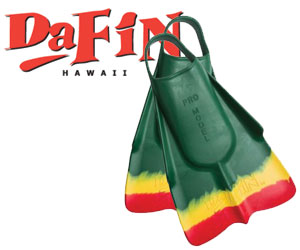
|
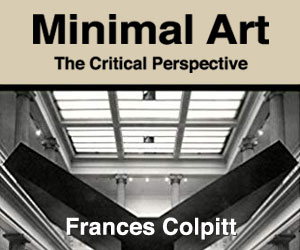

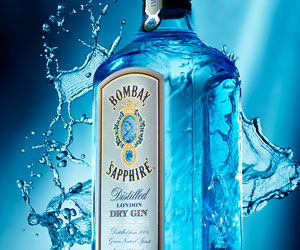
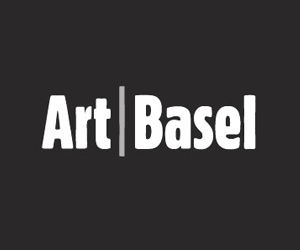





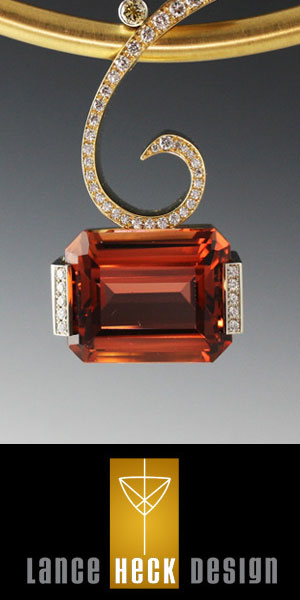




|